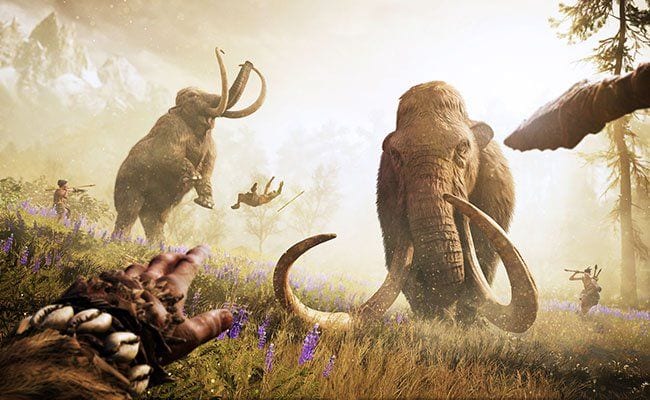
Far Cry 2 was, and still is, an anomaly in the world of shooters: A big-budget franchise shooter power fantasy that undercut its power fantasy with constant reminders that this kind of violence has consequences. Throughout the game your friends die, your friends betray you, and in the end, we team with the central villain to save some refugees before we both kill ourselves; doing something good before we let our violence consume us. It was a world that fought back at us as much as we fought it, and everyone was corrupted by the violence.
Far Cry 3 and 4 backed off from that deep cynicism to present a world in which violence was justified for the greater good. We played as an everyman caught up in someone else’s fight, but we let ourselves become a guerrilla soldier to help defeat an objectively evil political ruler. That’s not to say things are peaceful and happy when the games end; violence remains, but it doesn’t corrupt us. It’s presented as something we can control, harness, something we can turn on and off according to the situation.
This brief summary is meant to set up the history that Far Cry: Primal walks into. It’s an interesting game that straddles the line between its predecessors. It’s a violent world of brutal survivalism in the vein of Far Cry 2, with just enough of the justification from 3 and 4 to make it feel “sweet”.
Make no mistake, just because you can tame a pet sabretooth tiger (I called mine Mauly!) doesn’t mean Primal is a sweet game. It shows us a world more in line with Far Cry 2, one in which violence has left everyone scarred and scared.
For example, the herbalist of my tribe has ropes of ears hanging in her hut. She had previously talked to me about collecting the ears of a rival tribe, but I had assumed she wanted them for a trophy. Instead, they’re a balm: When outside, she’s haunted by the screams of dead friends; when inside, the ears hear the screams for her, so she can rest in silence. Violence is used to cure the pain of violence.
Our main rival tribe is even more violent than my ear-loving herbalist. They gleefully slaughter my people, but that’s because they suffer from “skull fire,” which sounds like a caveman term for a chronic migraine. It drives them to self-harm, putting holes in their head to “let out the fire,” and the only medicinal solution is sniffing bone dust. Naturally, it’s my tribe whose bones are being ground to dust.
Then there are the animals. The night is dangerous in the same way Africa was dangerous in Far Cry 2. The constant threat of a wolf attack reminds me of those respawning checkpoints that gamers so hated. Both obstacles make travel difficult and deadly, so going out into the world is not a decision to be made lightly. Both worlds hate us and desperately wants us dead.
Except, while Far Cry 2 ends still horrified by its own violence, Primal keeps going, and the further it goes the more conventional it becomes. When the rival tribe is defeated, the herbalist no longer hears screams. My tribe takes in refugees with nowhere else to go. Whereas once this was a world scarred by violence, now my violence becomes its salvation.
It’s a strange turn to see happen before my eyes, but it makes sense given the context. Primal isn’t just about surviving the wilderness but taming it, ruling it. The night wolves are indeed dangerous, but I very quickly gain the ability to tame my pet wolf, who scares off any others. Heck, my pet sabretooth protects me from literally every other wild animal. Even the Sabretooth that killed my friends at the very beginning of the game becomes my pet eventually (that’d be Mauly’s brother, Mauly One Eye).
Primal ultimately tells a story similar to 3 and 4, in which violence saves the world from violence, but Primal at least justifies this hypocrisy better than those games did. Before, the primitive world was untamed and violent. Afterward, the primitive world is tamed and violent.
Primal gives the Far Cry series the thematic link it has always been missing. If Far Cry 2 was about how violence controls us to destructive ends, and Far Cry 3/4 were about how we control violence to beneficial ends, Primal splits the difference: Violence controls the world, human and animal alike, the best we can do is direct it for our own benefit.
Me and Mauly One Eye began as enemies and ended as buddies; it’s an unambiguously happy ending of togetherness. However, to keep Mauly One Eye alive, I have to feed him meat continually, and that means every goat, deer, elk, rhino, badger, boar, bear, and mammoth in our path has got to die. We’re still as violent as we’ve ever been, we’re just not violent towards each other.
Far Cry 2 saw that kind of ending as a loss, 3/4 saw it as a victory, but Primal suggests it’s neither. It’s just the best we can do.

